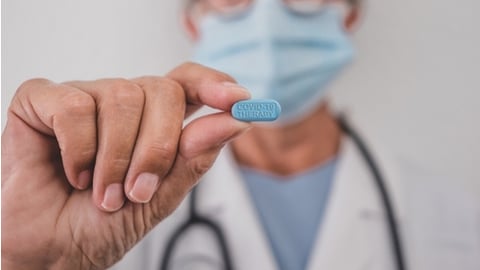H-E-B, Sam’s Club Among Top Retail Pharmacies: Study
According to the J.D. Power "2022 U.S. Pharmacy Study," H-E-B ranked highest among brick-and-mortar supermarket pharmacies for the second straight year, with a score of 785, while Wegmans (754) came in second and Publix (747) was third. Among brick-and-mortar mass-merchandiser pharmacies, Sam’s Club ranked highest for the seventh consecutive year, with a score of 759, while Costco (749) was No. 2 and CVS Pharmacy inside Target (713) made third place. Good Neighbor Pharmacy ranked highest among brick-and-mortar chain drug store pharmacies for the sixth year in a row, with a score of 740, while Health Mart (723) and Walgreens (660) were second and third, respectively.
Meanwhile, in the mail order segment, Kaiser Permanente Pharmacy ranked highest, with a score of 734, while CenterWell (formerly Humana Pharmacy) (699) came in second and OptumRx (694) made third place.
The report also found that in the wake of large-scale COVID-19 and flu vaccination drives, U.S. consumers have grown used to the idea of receiving health services at their local pharmacies. This shift toward health-and-wellness services, as well as medication management, may indicate the path forward for the retail pharmacy industry as it grapples with the rising threat of online retailers.
“Customers are beginning to embrace their retail pharmacy as a hub for a broad range of routine health and wellness services,” said Christopher Lis, managing director, global healthcare intelligence at Troy, Mich.-based J.D. Power, a provider of consumer insights, advisory services and data and analytics. “This transformation is happening simultaneously with rising competition from online retailers such as Amazon, which is raising the stakes for local retail pharmacies. This is an opportunity for more retail pharmacies to innovate as a one-stop shop for routine care and to leverage data and technology to create an increasingly personalized customer experience.”
Key findings of the 2022 study include:
- Customers are interested in receiving routine health care services at their pharmacies: Among pharmacy customers who expressed interest in receiving such services, 33% were interested in vision and hearing services, and 27% were interested in physical exams and routine lab tests at local retail pharmacies. Most customers were aware that their pharmacies didn’t currently offer these services, however.
- Health-and-wellness service use was linked to higher loyalty and brand advocacy: On average, 52% of customers who depend on pharmacies’ health-and-wellness services said that they won’t switch to other pharmacies. This compares with just 45% among those who haven’t made use of their pharmacy’s health and wellness services. Additionally, Net Promoter Scores were 14 points higher when customers used health-and-wellness services.
- Beware of Amazon: Nearly two-thirds (66%) of brick-and-mortar pharmacy customers currently have an Amazon Prime account, and almost half (48%) of pharmacy customers know about pharmacy services offered by Amazon. So far, 14% of those who know about Amazon’s Pharmacy Services have used Pill Pack filled through Amazon Pharmacy; of that group, 38% said that they “definitely will” switch pharmacies in the next 12 months.
- Mobile apps could become a prescription management battleground: Among brick-and-mortar customers who use their pharmacy’s mobile app, 59% use the app to manage prescription refills and 57% use it to view prescriptions. Overall satisfaction among those who’ve used their pharmacy’s mobile app six or more times in the past year is 715 (on a 1,000-point scale) – 32 points higher than among those who’ve used the app up to five times. Frequent app users are also less likely to say they’ll switch pharmacies.
For 2022, the study, now in its 14th year, was based on responses from 12,142 pharmacy customers who filled a prescription within the past 12 months and was fielded from September 2021 through May 2022.






